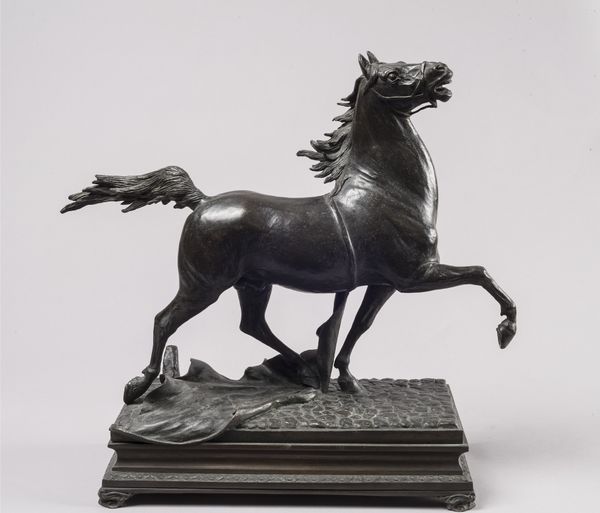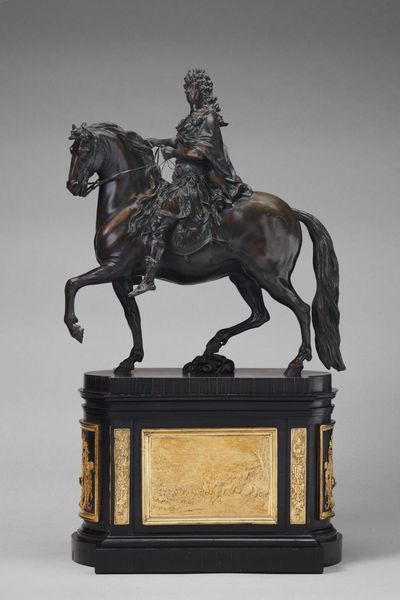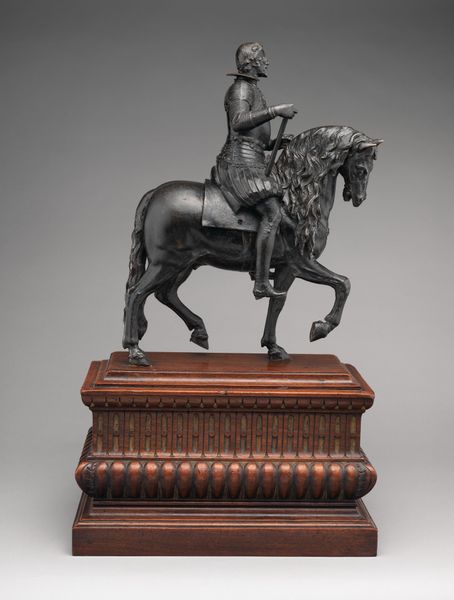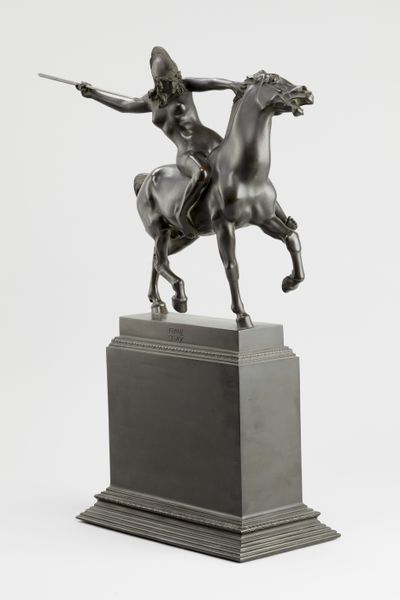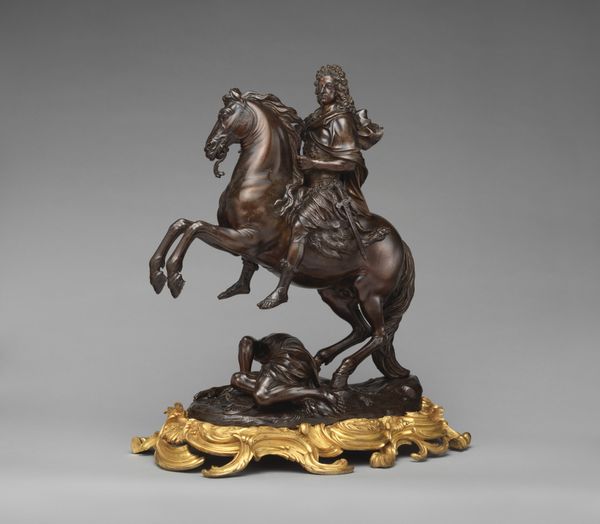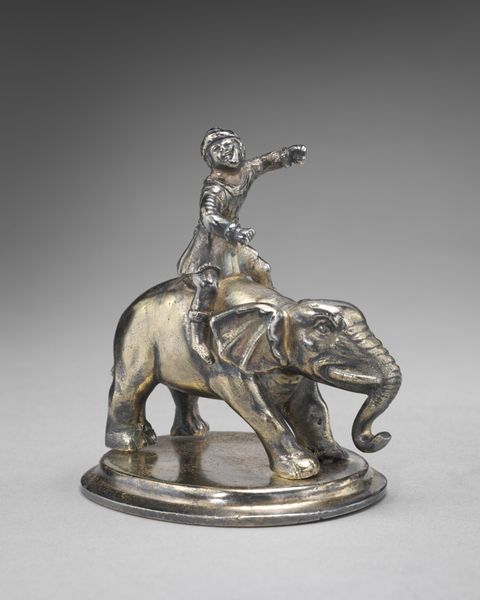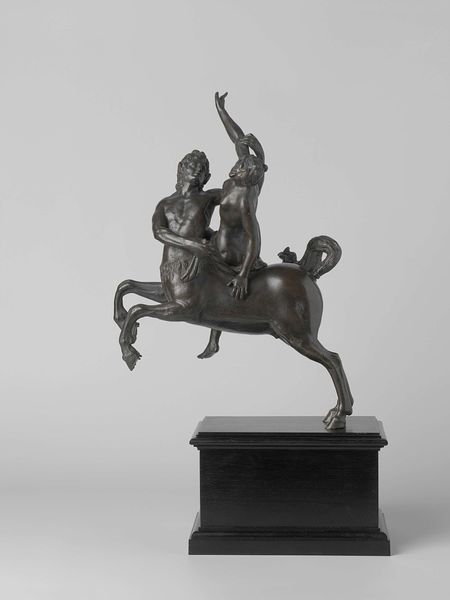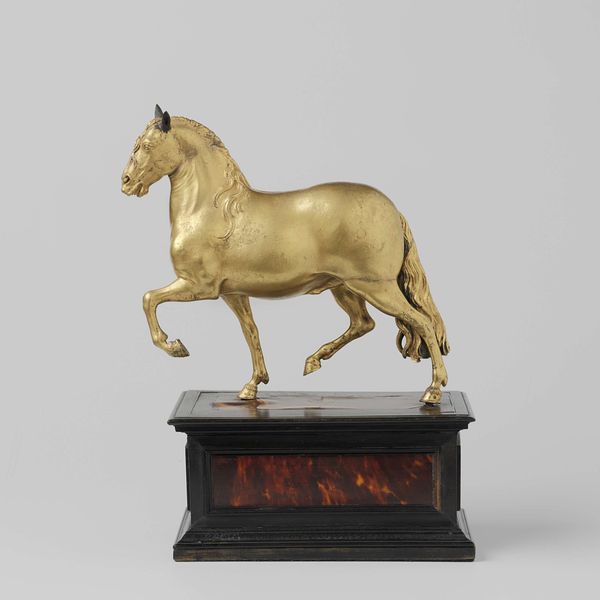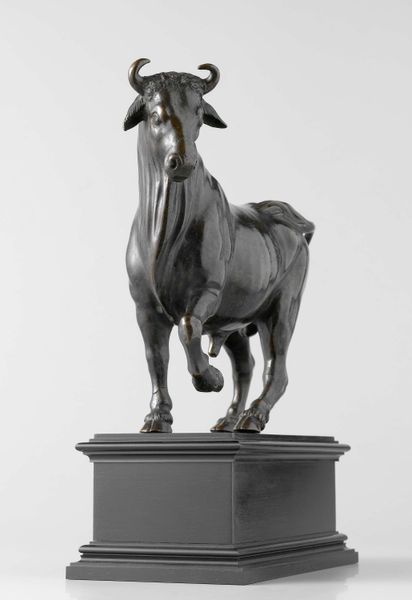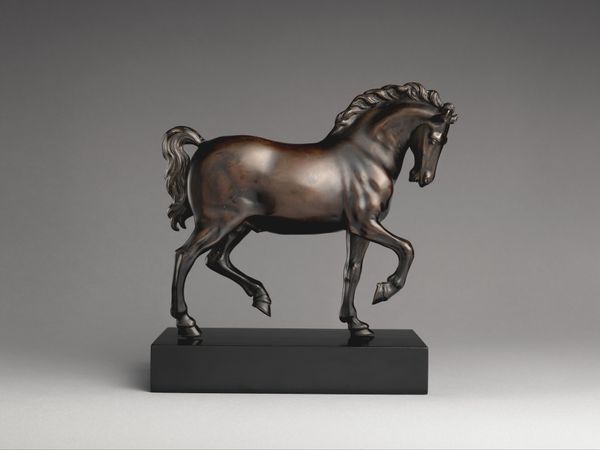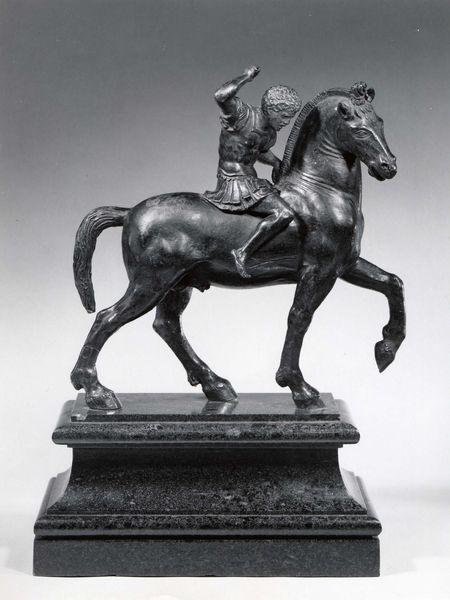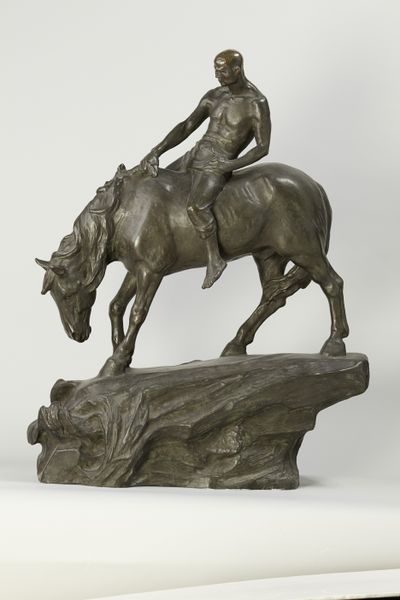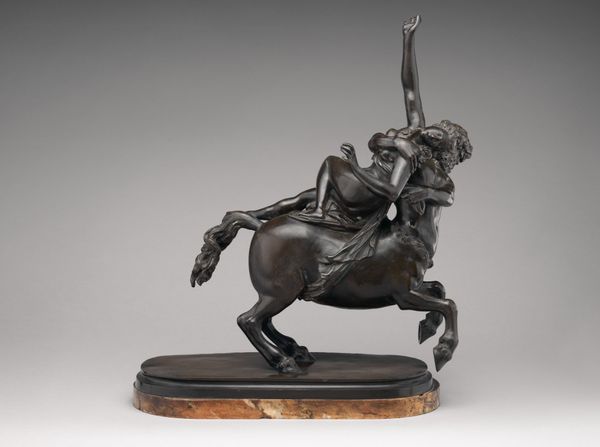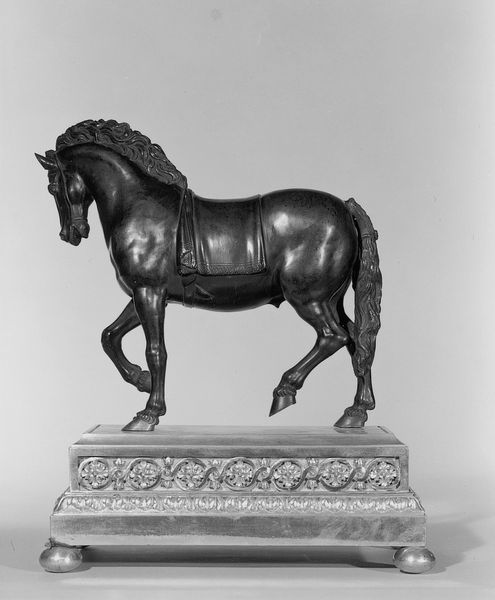
Dimensions: height 36.3 cm, height 25 cm, width 26.3 cm, depth 13.8 cm, weight 3.9 kg
Copyright: Rijks Museum: Open Domain
Editor: So, this is the equestrian statue of Stadtholder-King William III, made of bronze, sometime between 1736 and 1827. I am really struck by the almost industrial feel the bronze gives this royal figure. What does this piece evoke for you? Curator: The interesting thing to consider is the cost and availability of bronze during this period. It wasn't simply 'bronze' as we might think of it now, but an alloy that reflected very particular trade routes and mining practices of the time. Consider the labour involved in procuring and casting such a piece, it becomes a monument to more than just the King himself. Editor: That’s fascinating. It makes me rethink who this sculpture is really *for*. Beyond the King's glory, who else benefited from its creation? Curator: Exactly! Think about the foundries, the mines, the artisans… These weren't simply neutral suppliers. They were implicated in the political power being expressed. It’s also fascinating to think about the intended market for a miniature bronze like this one - perhaps the aristocracy sought to display their access to these labour-intensive objects, a symbol of class status enabled by commerce and exploitation. How does that material reality shift your reading of its “Baroque style”? Editor: It does, substantially. It pulls it away from being just ornamental. It suddenly feels deeply connected to the socio-economic structures of the time. Curator: Precisely. By understanding the means of production, we see the artwork not just as an isolated aesthetic object but as a node in a larger web of social and economic relations. Editor: This has really opened my eyes. I’ll never look at a bronze sculpture the same way again! Curator: Indeed, and that's the power of materialist art history – to unearth those hidden stories embedded within the object itself.
Comments
rijksmuseum about 2 years ago
⋮
After invading England, William III and Mary became its joint king and queen in 1689. William also remained stadtholder of the Netherlands. This small equestrian statue, modelled on a sculpture now in Bristol, shows the king in the guise of a Roman general. In reality, William was a poor horseman. In 1702 he fell from his horse and died from his injuries.
Join the conversation
Join millions of artists and users on Artera today and experience the ultimate creative platform.
